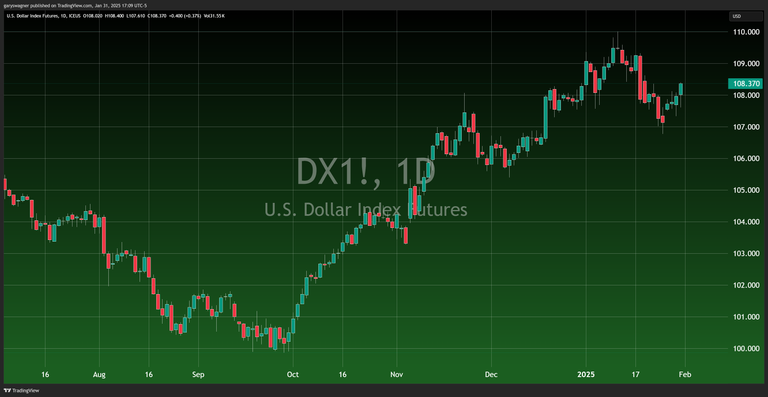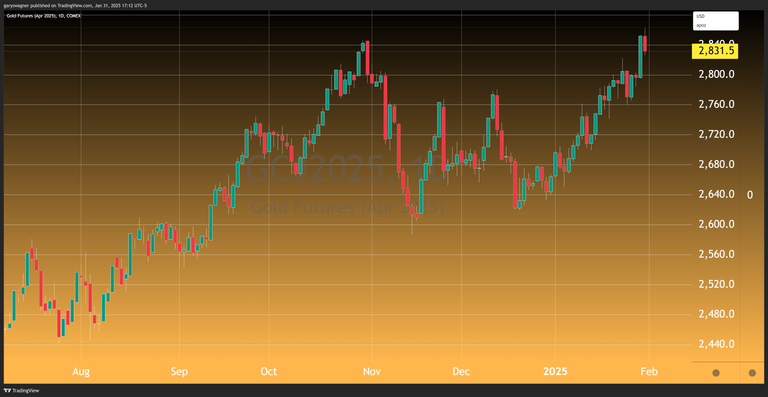Gold prices pulled back after reaching an unprecedented high on Thursday. The most active April futures contract is currently at $2,832.10, after factoring in today’s $20 or 0.70% price decline. The retreat coincided with strengthening dollar performance, as the U.S. dollar index climbed 0.31% to 108.486.

This was a week of significant global central bank policy decisions. While the Federal Reserve maintained its benchmark rate between 4.25% and 4.50%, other major central banks have begun pivoting toward more accommodative policies. The Bank of Canada notably ended its quantitative tightening program and indicated plans for government debt purchases. Similarly, the European Central Bank and Swedish Riksbank initiated rate cuts, while central banks in major gold-consuming nations – China's PBoC and India's RBI – signaled intentions to increase market liquidity.
Since mid-December's low of $2,620, gold has demonstrated remarkable momentum, gaining over $200 and establishing a strong upward trajectory.

This surge has been fueled by continuing geopolitical tensions, as well as concern surrounding the administration's new trade policies. President Trump's announcement of planned tariffs – 25% on imports from Mexico and Canada, and 10% on Chinese goods – has intensified market uncertainty, driving investors toward gold as a safe-haven asset. Trump has pledged to impose tariffs on imports from these countries on February 1.
Recent economic data adds another layer to gold's compelling narrative. The Personal Consumption Expenditures (PCE) report released today showed inflation running at 2.6% annually, up from November's 2.4%. The core PCE, which is the Federal Reserve's preferred inflation gauge excluding volatile food and energy prices, held steady at 2.8%, aligning with market expectations.
These factors suggest gold's bullish momentum, which delivered approximately 27% gains last year, could strengthen further. The combination of potential trade tensions, shifting monetary policies, and the potential for higher inflation continues to support the metal's appeal as a strategic hedge. As the administration moves forward with its proposed policy changes, particularly regarding international trade, investors appear increasingly inclined to maintain substantial gold positions as a buffer against market uncertainty.
The prospect of retaliatory measures from affected trading partners and the potential for escalating trade disputes has heightened concerns about inflationary pressures, further cementing gold's status as a key defensive asset in today's complex economic landscape.
For those who want more information on our premium service, please click the link Premium Service
Wishing you, as always, good trading,

